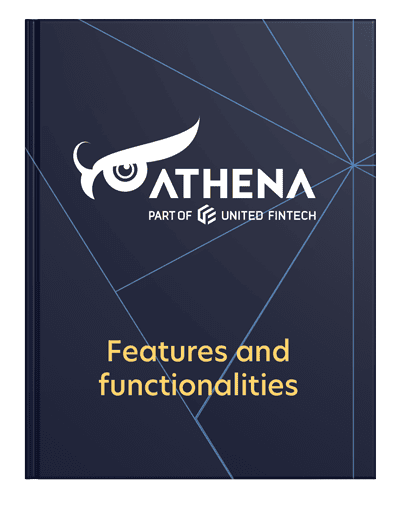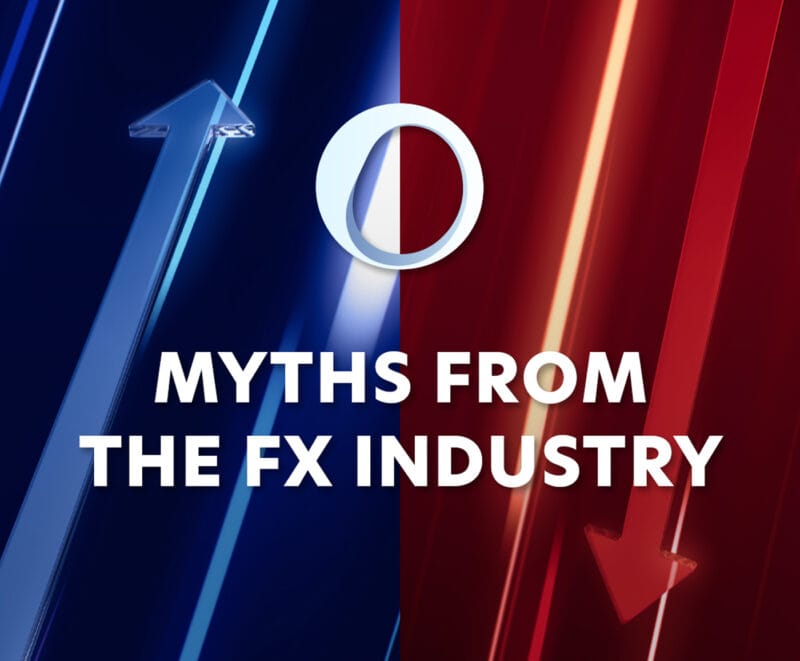For seasoned forex traders, anyone just getting started, and of course, for any macroeconomic nerds out there, inflation is an essential concept to wrap your head around.
In this guide, you can get a refresher on what inflation is, what causes it, how governments usually respond to it, and how it affects players in the forex market.
Of course, we can all see the effects of inflation for ourselves. Maybe it’s the same groceries costing more and more at the supermarket, maybe it’s energy bills going up and up, and yet no sign of a raise at work.
Ronald Reagan famously said during the 1975 presidential campaign that “inflation is as violent as a mugger, as frightening as an armed robber and as deadly as a hitman”. Inflation affects our standard of living, and gets politicians elected or thrown out of office.
For many of us, inflation is more noticeable now than at any other time in our lives. The Bureau of Labor Statistics has just released the latest figures for the US: a year-on-year rise of 7.5% in January, the highest since 1982. In the eurozone, the inflation rate in January was 5.1%, while in the UK, it’s hitting 5.5%
But what is inflation? How does inflation affect FX and FX derivatives traders? And when the rate of inflation rises around the world, what should you expect?
Let’s find out.
What is inflation and how is it measured?
Inflation is the rate at which the prices of goods and services are rising over a period of time. The most common measure of inflation is the Consumer Price Index (CPI), which shows how the cost of a basket of common items consumers buy changes over time. Other measures exist too, and in the eurozone, for example, the Harmonized Index of Consumer Prices (HICP) is used.
When prices rise faster than consumers’ nominal income, then their real income, or purchasing power, falls. In other words, consumers can buy less with the same amount of the currency—it loses value, and its exchange rate can weaken relative to other currencies, unless they’re seeing even higher levels of inflation.
In the short term, the majority of economists consider low, stable inflation a good thing—any growing economy will experience some inflation, while deflation can mean falling income and economic slowdown.
As long as inflation is low and predictable, policymakers can often manage the impact of uneven rises in prices and wages on living standards. However, high inflation can lead to serious problems in living standards and economic stability.
What causes inflation?
Inflation can be caused by increasing demand (demand-pull inflation) and decreasing supply (cost-push inflation):
Demand-pull inflation
When aggregate demand (the total demand in a market) outstrips aggregate supply (the total supply in a market), prices rise. This can happen as a result of an increase in money supply, lower interest rates, rising wages, government spending, or lower taxes—all of which lead to a rise in consumer spending. More money competes for the same amount of goods and services, so prices go up.
Cost-push inflation
Inflation can also be caused by supply shocks such as disrupted production or rising production costs. This can happen because of natural disasters affecting production, or companies having to pay higher wages, increased import costs following a devaluation, or an increase in VAT. Expectations of inflation, or ongoing inflation, also play an important role, as they can lead workers to demand higher wages, and lead companies to build in periodic price rises for their goods and services—this, in turn, adds further inflationary pressure.
What measures do policymakers use to control inflation?
When inflation reaches worryingly high levels, policymakers act by imposing disinflationary measures to bring it under control. This predictability creates opportunities for forex traders. Anticipate inflation, anticipate central bank policies, and you can position yourself to profit.
Contractionary policies
Most commonly, central banks pursue contractionary monetary policies to reduce aggregate demand.
To reduce money supply, they can increase the reserve requirements for banks, meaning they have less money left to lend. They can also increase the coupons on government bonds, making them more attractive to investors. This means money flows out of circulation and to the government.
To reduce consumer spending, they typically raise interest rates, which encourages saving and makes borrowing more expensive. High interest rates also generally attract foreign investment, which can have an impact on the exchange rate.
Governments can also employ fiscal policies to tackle inflation, such as imposing higher taxes or reducing government spending, which hit consumers’ purchasing power.
Other measures
Other measures policymakers use include attempts to manage expectations through announcements, and fixing exchange rates by tying the currency to another currency. This can be highly complicated, however, and lead to countries accumulating debt to pay for subsidies that maintain prices at certain levels.
How does inflation affect FX?
Exchange rates depend on the desirability of one currency over another—and even the perception of desirability—and that depends on various economic factors, including:
- Economic growth
- Stability (of both the government and the economy)
- Trade balance (i.e. demand for country’s goods and services)
- Interest rates
- National debt levels
Low, stable inflation can be an indicator of economic growth, but high inflation generally has a negative effect on a currency’s exchange rate, as it can indicate instability and have knock-on effects on the trade balance, interest rates, and national debt levels.
However, in periods of high inflation around the world, even an economy suffering high inflation can see its currency strengthen relative to another with even higher inflation.
All this means the latest CPI or HICP inflation data is essential forex trading information.
When the figures are released, signs that inflation is rising above anticipated or acceptable levels are likely to have a negative effect on the currency’s exchange rate, depending on the relative strength of other currencies. They can also give a good indication of whether policymakers will impose measures such as those described above.
Investors can take positions accordingly, in anticipation of market movements and subsequent movements following the announcement and implementation of disinflationary measures.
How can forex traders take advantage of rising global prices?
The inflationary fires have been well and truly stoked by the twin supply-side shocks of coronavirus and Russia’s invasion of Ukraine, coupled with increased demand driven by counter-pandemic government stimulus packages over the last couple of years.
With prices on the rise around the world, inherited wisdom suggests central banks will turn to contractionary monetary policies, hiking interest rates to strengthen their currency by attracting foreign investment. The challenge for FX traders is to predict these actions and take positions before they’re taken.
Below are three simplified scenarios showing some possible trades. Remember, if you’re trading forex, changes in monetary policy can have different effects depending on the situation and lots of complex factors, and the results aren’t always highly predictable – if they were, it’d be a lot easier for governments to manage inflation!
| Scenario 1 | Scenario 2 | Scenario 3 | |
| What the indicators show: | Continued inflation likely | Continued inflation likely | Inflation but likely to be temporary |
| What policy you expect the central bank to announce: | Interest rates hike (moderate) | Interest rates hike (aggressive) | No rates hike for now |
| How you expect the policy will affect the economy: | A modest check on price rises but no significant slowdown or weakening of the economy | Significant slowdown and weakening of the economy, possibly recession | Continuation of effects of inflation |
| Possible trade: | Invest in currency | Hedge by investing in a commodity like gold or using options and forwards for currency pairs | Look to other variables affecting exchange rates and relative strengths of currency pairs |
The go-to platform for capital markets digitalization
Whether you’re using real-time forex data platforms to monitor the markets or tools to automate security issuances and compliance documentation, at United Fintech we’re on a mission to help financial institutions reduce costs, drive automation, and deliver efficiency.
We’re going to do that by bringing you the latest and best FinTech tools, products, and solutions—all in one place and all specially curated to give you the edge, now and in the future.
One of those solutions is NetDania. NetDania offers a first-class financial charting tool called NetStation, providing you with live forex charts with over 2,100 currency pairs, as well as thousands of stocks, indices, and commodities. As well as real-time stock charts and trading information, NetDania offers a tool called Social Charts, which is an interactive charting platform where users can interact with dynamic chart analyses and share them.
Ready to get started? Book a call with one of our experts to find out more.














